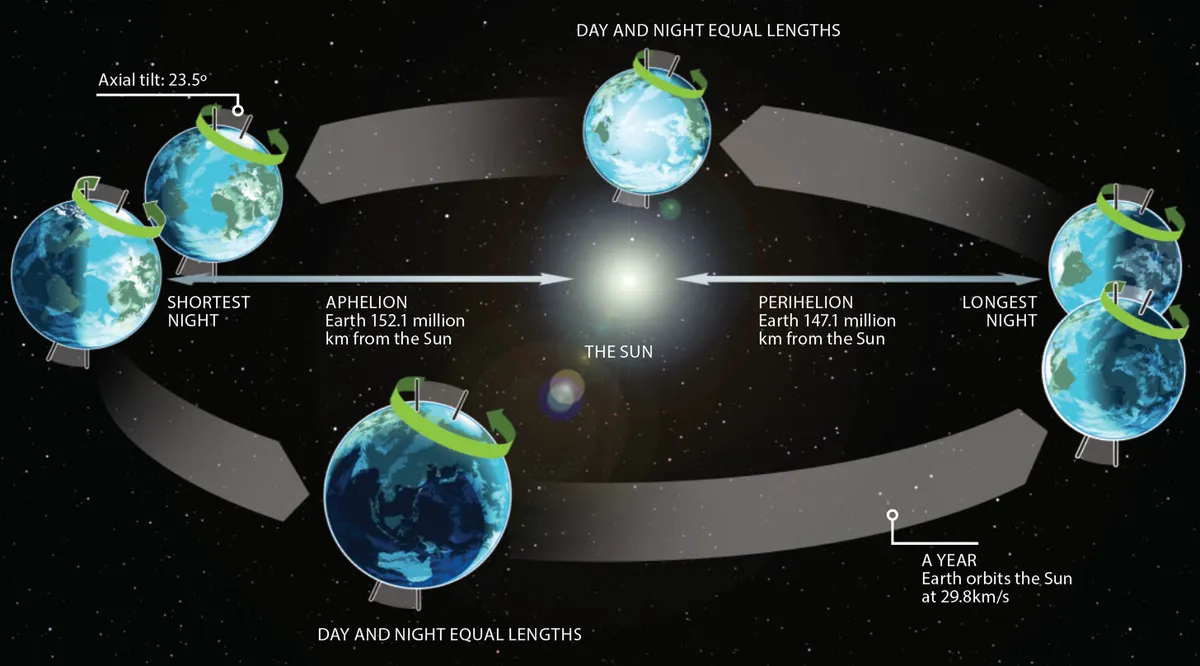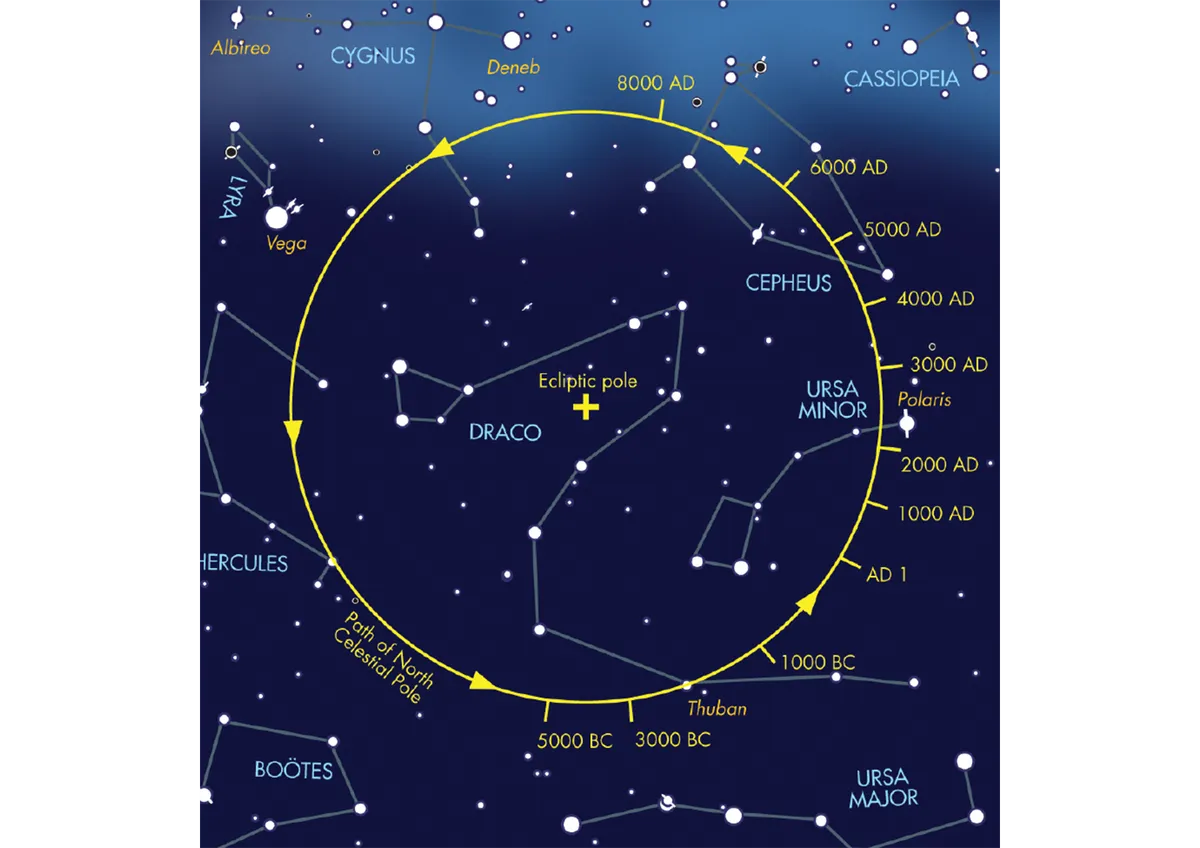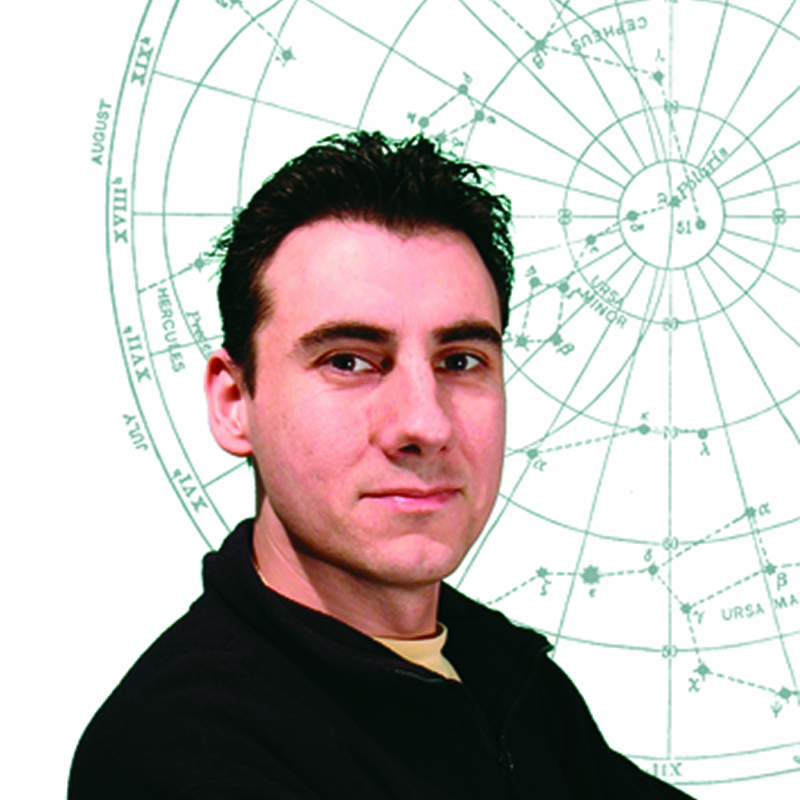We’ve all been told that Earth goes round the Sun. Our star, of course, has a gravitational hold on all the Solar System’s planets, with the closest planets travelling in orbit around it faster than those further away.
On Earth, we’re fairly close to the Sun, at a distance of some 150 million km (93 million miles). Earth's orbit around the Sun takes 940 million km and 365.24 days, or what we call one year.
Over this time, Earth notches up a speed of 108,000km/h (67,000 mph) on its journey round the Sun.
If you imagine a vapour trail being left by the Earth as it orbits, after one year the Earth would meet up with and complete the trail, thus forming a slightly squashed circle (an ellipse) around the Sun.
This is the imaginary line we call the ecliptic and from our viewpoint on Earth, we’d always find the Sun and the other planets somewhere along this path, or close to it.

How fast does Earth spin?
As well as orbiting the Sun, the Earth is also spinning on an axis running through the North and South Poles – this is what gives us day and night.
Earth rotates at 1,670km/h (1,030mph) around the polar axis, but it doesn’t do this at right angles to its orbital path. The axis is tilted over by 23.5°.
This is why all Earth globes are leaning over. They represent our planet as it sits in space going around the Sun – something that’s technically known as Earth’s ‘obliquity of the ecliptic’.
With the tilted Earth going around the Sun, over the course of a year we can start to make sense of the astronomical points that mark the start of the seasons.
What causes the changing of the seasons?
While it’s true that Earth does have a slightly elliptical orbit – leading to a difference of 5 million km (3 million miles) between Earth’s closest point to the Sun (known as perihelion) and the furthest point (aphelion) – it’s not this that causes the seasons.
In fact, during the northern hemisphere’s winter, Earth is as close to the Sun as it can get: perihelion occurs around 4 January.
The seasons are caused by the Earth’s 23.5° tilt and how this affects the amount of sunlight hitting our planet from the Sun.
To demonstrate, let’s start with the North Pole tilting the full 23.5° towards the Sun, while the South Pole is tilting fully away from the Sun.

The northern hemisphere is receiving a large dose of sunlight and the day this happens is the longest day of summer in that part of the world, while in the southern hemisphere it’s the shortest day of winter. This point, known as the solstice, is around 20 June.
There’s another solstice six months later, when the tilt is reversed. Now the South Pole is tilted sunward and the North Pole is angled away into space. This marks the shortest day in the north and the longest day in the south, around 21 December.
The best time to get some stargazing done, therefore, is in winter. This is when your particular pole is pointing away from the Sun, and hence this is when days are shorter and nights are longer.
Find out more about this in our guide What causes seasons on Earth?
Why do stars change position?
Day by day, the stars and constellations shift slightly in the sky as a consequence of the Earth orbiting the Sun. To visualise this, imagine looking at the Earth from far above the North Pole.
From here we can see our planet travels in an anticlockwise direction. Now if we draw an arrowed-line from the Sun through the Earth and out into space, it will point to a constellation that is at its highest at midnight.
The next day, though, the Earth will have moved, and the line will have as well. Taken over the year, this ‘midnight’ observing line travels all the way round the sky – so as we go round Earth’s orbit, the constellations that are visible change.
Earth's axis is slowly shifting

The tilt of the Earth’s axis means that the same stars appear above the poles. In the northern hemisphere, Polaris is always in the same place at night – almost directly above the North Pole.
If Earth’s axis of rotation was shifting anywhere over the year as the Earth travels round the Sun, then we’d see a change in this star’s position.
On longer timescales there is a shift in Earth’s axis, but it’s very, very slow. This shift, or wobble, is called precession and it slowly moves the pole around, but it takes 25,800 years to complete one circuit.
It’s the kind of movement that isn’t perceptible to the eye during our lifetime, but plotting the path on the starchart above shows how stars such as Thuban in Draco and Vega in Lyra have held the title of Pole Star before, as they will again in the distant future.
This guide originally appeared in the January 2012 issue of BBC Sky at Night Magazine.
